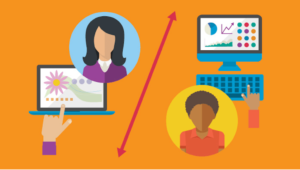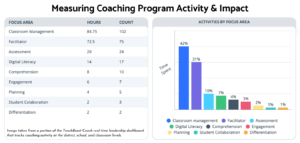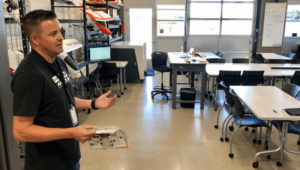Leading the Way for Building 21st Century Instructional Coaches

A great 21st century education uses a blended model of technology and highly effective teacher to better prepare students to be ready for college and career. What does a 21st century professional development program do? Washington STEM decided it was time to look into this. With a goal to increase the number of students that are prepared to go into the science, tech, engineering or math fields, Washington STEM hopes to inspire students to persevere through the difficult subject matter. In order to affect change, they are working on STEM PD, a program developed to move professional development and STEM instructional coaching into the next century.
Current Classroom Observations. Most teachers have encountered a variety of classroom observations, and for many the experience falls short of helpful. The principal or coach comes in, sits near the back of the classroom, observes the kids in direct view, jots down some notes and then continues on with an extremely busy day. The observation becomes an action that results in nothing more than crossing an item off of a very long list of “to dos.” With only a few math coaches for several huge districts, Washington State needs support to make these coaches, and their time in the classroom, more effective and efficient. To do this, STEM PD is incorporating technology for a more meaningful and productive relationship between the teachers, their coaches, and their students.
Washington STEM identified the work that was being done at the University of Washington (UW) by College of Education Professor Elham Kazemi as a thoughtful approach to Professional Development. They began looking for a way to expand the reach of her thoughtful work designing professional learning experiences for math teachers. Building a partnership with Professor Kazemi and her colleague Jessica Thompson allowed for the creation of a library of 30 video examples of Next-Gen and Common Core practices. The current PD platform of resources includes reading materials, the video library mentioned above as well as the ability to videotape their own lessons, and instructional coaching.
The next step is to build a unique model to support 21st century instructional coaches who can access more classrooms and support more students in a deeper understanding of math and science. Washington STEM has turned to technology to create a scalable program that will help transform traditional coaching models. The goal is a program that looks to support, rather than solely evaluate teachers
The New Idea: Bug in ear coaching. This is where an instructional coach observes a lesson from outside the classroom using high tech cameras and provides the teacher with instant feedback talking into a mic that the teacher can hear through an earpiece,, sharing best practices for the teacher to try immediately. This allows talented coaches to maximize their time by working from one remote location, eliminating unnecessary travel time, and reach more teachers every day.
The Tools: The technology allows this to be a bigger movement and reach a wider audience. The hardware, including the classroom cameras chosen for the project are from thereNow and software (along with consulting services) comes from IRIS Connect.
The Plan: Bring in a coach from the UK with first hand knowledge of both bug in ear coaching as well as with the specific IRIS Connect software to model the experience with participating district teachers.
The Trial: Less than a month ago, a very willing and excited teacher bravely volunteered his classroom as the first to participate in the program. Cameras were set up and the teacher was hooked up with a mic as well as a bug in his ear. The coach sat in the teacher’s lounge alongside several of the teacher’s colleagues and observed the lesson, providing immediate feedback and suggested actions.
The Reaction: After the lesson was completed, the teacher was THRILLED with the experience. He was excited to share with neighboring teachers and felt that the immediate feedback directly related to his willingness to make changes in his classroom and the reality of those suggestions becoming common practice in his daily lessons.
The team is in the initial stages of this project, but is also pleased with the reaction that they are seeing from the school communities. As with any major changes, there is an understandable level of nervousness from teachers. Because of this, STEM PD offers support in change management and encourages schools and districts to decide how the program is implemented, including who should use the program according to their own teacher culture.
STEM PD continues to look at ways that technology can mediate learning experiences for teachers, resulting in more rapid uptake and long term change in classroom practice, and we are looking forward to see “bug in coaching” spread across the state and the country. This serves as a good reminder to us all to practice what we preach. Are we providing teachers with a deeper learning professional development experience that is as valuable as the lessons that we are asking our teachers to create?
For more on the evolution of professional development look to:




0 Comments
Leave a Comment
Your email address will not be published. All fields are required.